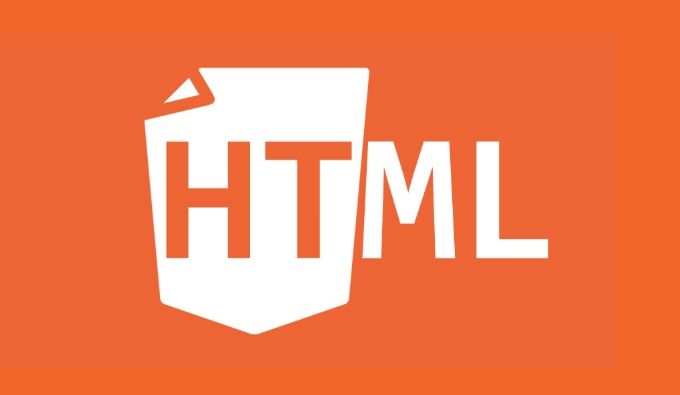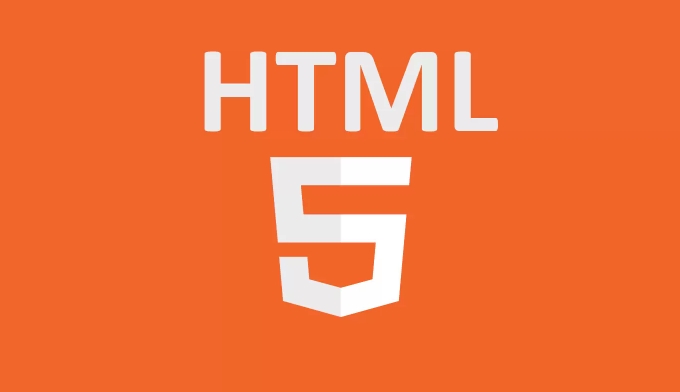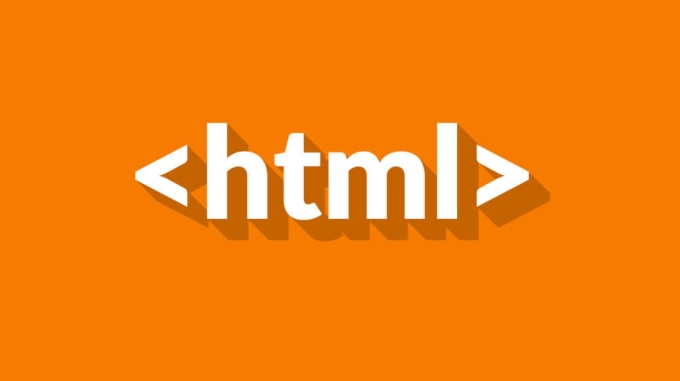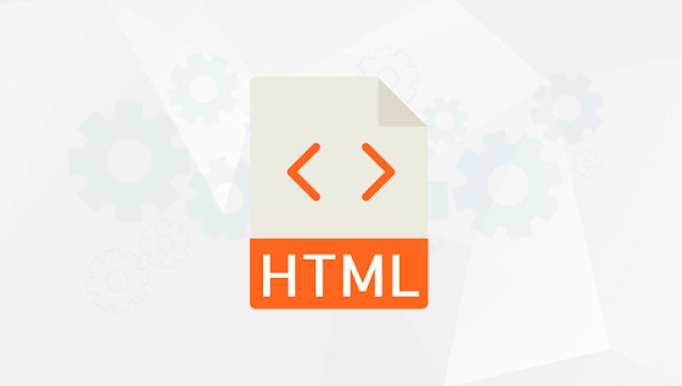Local Storage using HTML5 can efficiently store browser-side data. 1. Basic operations include using setItem() to store data, getItem() to retrieve data, and when accessing objects, you need to use JSON.stringify() and JSON.parse() to convert it; 2. Use removeItem() to delete data, and use clear() to clear it; 3. It is suitable for saving non-sensitive information such as user preferences, pay attention to the 5MB storage upper limit, data persistence and homologous strategy; 4. It is recommended to check whether the browser supports Storage before use.

Using HTML5's local storage is actually quite simple. The key is to understand what it can do and how it can be used. Unlike cookies, every request is sent to the server, Local Storage is present in the browser and is suitable for saving some data that does not require frequent transmission.

1. Basic operations: Save and withdraw
The two most core methods of Local Storage are setItem() and getItem() , which are used to store and retrieve data respectively.
For example, you want to save the user's username:

localStorage.setItem('username', 'Tom');
Then want to display it on the page:
let name = localStorage.getItem('username'); console.log(name); // Output Tom
Note: Local Storage is a string type. If you want to save objects or arrays, remember to use JSON.stringify() first:

let user = { name: 'Tom', age: 25 };
localStorage.setItem('user', JSON.stringify(user)); When reading, you should also use JSON.parse() to restore it to an object:
let userData = JSON.parse(localStorage.getItem('user')); console.log(userData.name); // Output Tom
2. Delete and clear data
Sometimes you may need to delete a key-value pair or simply clear it all.
- Delete a single key-value pair:
localStorage.removeItem('username');
- Clear all data:
localStorage.clear();
These two methods are not used much but are important, especially when users log out or reset settings.
3. Use scenarios and precautions
Local Storage is suitable for saving user preferences, form drafts, theme settings, etc. that are insensitive but want to be persistent. For example, remember the theme color the user chose last time, or save shopping cart information (but you should pay attention to safety and do not place sensitive data).
A few things to note:
- The storage size is usually capped at about 5MB, and there are slight differences between different browsers.
- Data will not expire unless manually cleared.
- Same-origin policy restrictions, that is, only pages under the same domain name can access the same Local Storage.
- Cross-domain access is not supported, so don't expect one website to read data stored on another website.
4. Check whether Local Storage is supported
Although most modern browsers now support Local Storage, it is recommended to do a test for safety reasons:
if (typeof(Storage) !== "undefined") {
// Support Local Storage
} else {
// Not supported, consider using cookies or other methods instead}This can avoid errors from older browsers.
Basically, that's all, it doesn't seem complicated, but there are several details that are easy to ignore when used, such as type conversion, cross-domain issues, storage capacity, etc. Just pay attention to these points, Local Storage can save you a lot of trouble.
The above is the detailed content of How to use HTML5 local storage?. For more information, please follow other related articles on the PHP Chinese website!

Hot AI Tools

Undress AI Tool
Undress images for free

Undresser.AI Undress
AI-powered app for creating realistic nude photos

AI Clothes Remover
Online AI tool for removing clothes from photos.

Clothoff.io
AI clothes remover

Video Face Swap
Swap faces in any video effortlessly with our completely free AI face swap tool!

Hot Article

Hot Tools

Notepad++7.3.1
Easy-to-use and free code editor

SublimeText3 Chinese version
Chinese version, very easy to use

Zend Studio 13.0.1
Powerful PHP integrated development environment

Dreamweaver CS6
Visual web development tools

SublimeText3 Mac version
God-level code editing software (SublimeText3)

Hot Topics
 Audio and Video: HTML5 VS Youtube Embedding
Jun 19, 2025 am 12:51 AM
Audio and Video: HTML5 VS Youtube Embedding
Jun 19, 2025 am 12:51 AM
HTML5isbetterforcontrolandcustomization,whileYouTubeisbetterforeaseandperformance.1)HTML5allowsfortailoreduserexperiencesbutrequiresmanagingcodecsandcompatibility.2)YouTubeofferssimpleembeddingwithoptimizedperformancebutlimitscontroloverappearanceand
 What is the purpose of the input type='range'?
Jun 23, 2025 am 12:17 AM
What is the purpose of the input type='range'?
Jun 23, 2025 am 12:17 AM
inputtype="range" is used to create a slider control, allowing the user to select a value from a predefined range. 1. It is mainly suitable for scenes where values ??need to be selected intuitively, such as adjusting volume, brightness or scoring systems; 2. The basic structure includes min, max and step attributes, which set the minimum value, maximum value and step size respectively; 3. This value can be obtained and used in real time through JavaScript to improve the interactive experience; 4. It is recommended to display the current value and pay attention to accessibility and browser compatibility issues when using it.
 Adding drag and drop functionality using the HTML5 Drag and Drop API.
Jul 05, 2025 am 02:43 AM
Adding drag and drop functionality using the HTML5 Drag and Drop API.
Jul 05, 2025 am 02:43 AM
The way to add drag and drop functionality to a web page is to use HTML5's DragandDrop API, which is natively supported without additional libraries. The specific steps are as follows: 1. Set the element draggable="true" to enable drag; 2. Listen to dragstart, dragover, drop and dragend events; 3. Set data in dragstart, block default behavior in dragover, and handle logic in drop. In addition, element movement can be achieved through appendChild and file upload can be achieved through e.dataTransfer.files. Note: preventDefault must be called
 How can you animate an SVG with CSS?
Jun 30, 2025 am 02:06 AM
How can you animate an SVG with CSS?
Jun 30, 2025 am 02:06 AM
AnimatingSVGwithCSSispossibleusingkeyframesforbasicanimationsandtransitionsforinteractiveeffects.1.Use@keyframestodefineanimationstagesforpropertieslikescale,opacity,andcolor.2.ApplytheanimationtoSVGelementssuchas,,orviaCSSclasses.3.Forhoverorstate-b
 HTML audio and video: Examples
Jun 19, 2025 am 12:54 AM
HTML audio and video: Examples
Jun 19, 2025 am 12:54 AM
Audio and video elements in HTML can improve the dynamics and user experience of web pages. 1. Embed audio files using elements and realize automatic and loop playback of background music through autoplay and loop properties. 2. Use elements to embed video files, set width and height and controls properties, and provide multiple formats to ensure browser compatibility.
 What is WebRTC and what are its main use cases?
Jun 24, 2025 am 12:47 AM
What is WebRTC and what are its main use cases?
Jun 24, 2025 am 12:47 AM
WebRTC is a free, open source technology that supports real-time communication between browsers and devices. It realizes audio and video capture, encoding and point-to-point transmission through built-in API, without plug-ins. Its working principle includes: 1. The browser captures audio and video input; 2. The data is encoded and transmitted directly to another browser through a security protocol; 3. The signaling server assists in the initial connection but does not participate in media transmission; 4. The connection is established to achieve low-latency direct communication. The main application scenarios are: 1. Video conferencing (such as GoogleMeet, Jitsi); 2. Customer service voice/video chat; 3. Online games and collaborative applications; 4. IoT and real-time monitoring. Its advantages are cross-platform compatibility, no download required, default encryption and low latency, suitable for point-to-point communication
 How to create animations on a canvas using requestAnimationFrame()?
Jun 22, 2025 am 12:52 AM
How to create animations on a canvas using requestAnimationFrame()?
Jun 22, 2025 am 12:52 AM
The key to using requestAnimationFrame() to achieve smooth animation on HTMLCanvas is to understand its operating mechanism and cooperate with Canvas' drawing process. 1. requestAnimationFrame() is an API designed for animation by the browser. It can be synchronized with the screen refresh rate, avoid lag or tear, and is more efficient than setTimeout or setInterval; 2. The animation infrastructure includes preparing canvas elements, obtaining context, and defining the main loop function animate(), where the canvas is cleared and the next frame is requested for continuous redrawing; 3. To achieve dynamic effects, state variables, such as the coordinates of small balls, are updated in each frame, thereby forming
 How to check if a browser can play a specific video format?
Jun 28, 2025 am 02:06 AM
How to check if a browser can play a specific video format?
Jun 28, 2025 am 02:06 AM
To confirm whether the browser can play a specific video format, you can follow the following steps: 1. Check the browser's official documents or CanIuse website to understand the supported formats, such as Chrome supports MP4, WebM, etc., Safari mainly supports MP4; 2. Use HTML5 tag local test to load the video file to see if it can play normally; 3. Upload files with online tools such as VideoJSTechInsights or BrowserStackLive for cross-platform detection. When testing, you need to pay attention to the impact of the encoded version, and you cannot rely solely on the file suffix name to judge compatibility.






